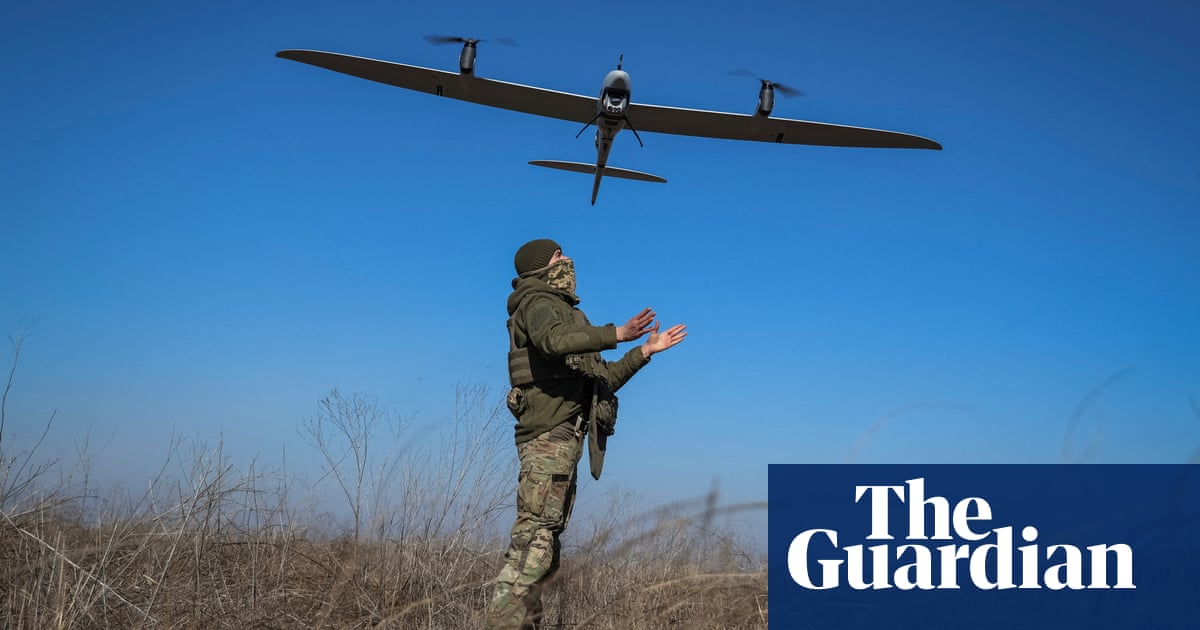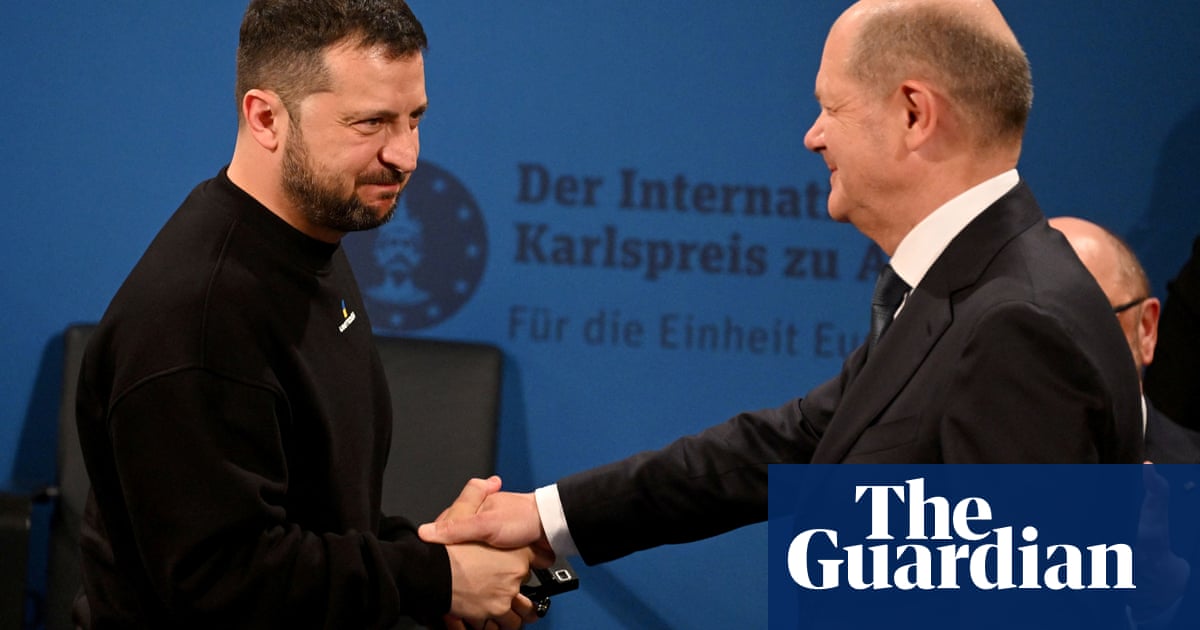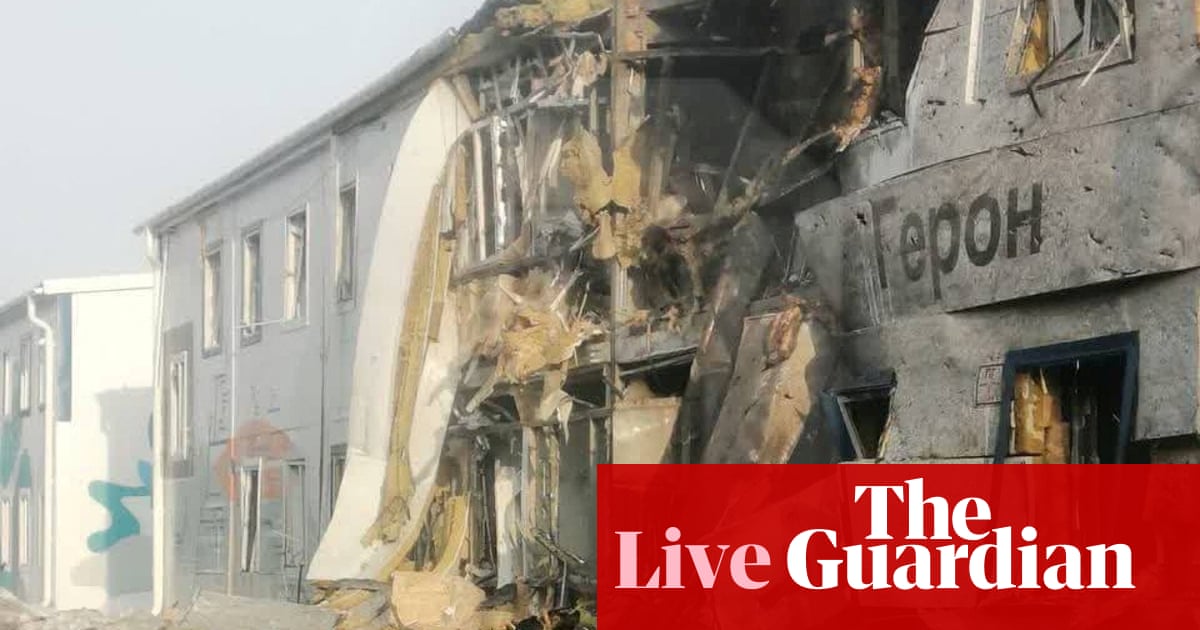
Ukraine could make 2m drones a year – double the existing rate of production – with extra financial support from the US, other western governments and private citizens, the country’s minister for digital transformation has claimed.
Mykhailo Fedorov said in an interview that Ukraine’s government was “contracting much less than our manufacturers are capable of” because it did not have enough funds on hand. He pressed for further donations to help the war effort.
The 33-year-old digital minister, who is responsible for drone production, said Ukraine was on track to produce “more than a million” drones in 2024, which would exceed a 1m target for manufacture set by the president, Volodymyr Zelenskiy, late last year, but could make even more.
“We’ve been able to scale the market so much that we can manufacture more than one or even two million drones,” he said, arguing that there was potential to increase production of all types of drones further.
Ukraine has come under increasing pressure on the frontline in the two-year war as the US Congress refuses to give the green light to a $60bn (£47bn) military aid package, and has turned heavily to largely homegrown drone technology in response.
The minister said there were more than 200 Ukrainian companies operating in the drone space, making a wide variety of uncrewed aerial systems. Of the systems used on the battlefield, he said, “over 90% of these drones are manufactured in Ukraine”.
Ukraine was almost self-sufficient in drone assembly as a result, Fedorov said, with the exception of commercial quadcopters for reconnaissance. However, components would always have to be sourced internationally, he added.
The immediate challenge in the drone sector, was financial, Fedorov said, and he acknowledged that Ukraine was “feeling the lack of [financial] assistance” from the US. Europe was helping, he added, and last week the UK said it would spend £325m to help buy at least 10,000 drones for Ukraine’s military.
Kyiv is also soliciting donations from members of the public, through its United 24 fundraising initiative, with a particular focus on raising money for its $250,000-a-time Sea Baby drones used to successfully attack Russian warships in the Black Sea. One fundraiser for sea drones had raised $8m in 36 hours, he added.
The bulk of the drones used on the frontline are cheap, light “first person view” drones, costing $400 or less a time, which are controlled remotely from the viewpoint of the aerial vehicle itself, although the minister acknowledged these had some limitations.
The drones could typically carry only a relatively small amount of explosive, the size of two grenades, Fedorov said, meaning “we can’t say that drones are a full substitute for artillery”. Ukraine remains badly short of artillery munitions, the principal weapon of the war, with Russian production of 250,000 shells a month believed by Nato to be three times greater than the west’s, according to a fresh assessment.
However, Ukraine’s relative success in drone technology was, Fedorov argued, “a way to fight for the attention of the citizens of different countries”, which he described as a part of “sub-domain of the war, the informational domain”.
Stories about sea drones, in particular, were, the minister said, considered to be an effective way of selling Ukraine’s continuing fight to the global public, at a time when there are concerns about fatigue setting in, particularly in the US. Last month, Ukraine said it had sunk the Russian corvette the Ivanovets, releasing drone footage of the attack ending with images of the ship listing dangerously and then sinking.
Other types of drones highlighted by Fedorov as significant in the war effort include reconnaissance drones, an area where western companies have been particularly helpful, and “bomber drones”, able to loiter in an area and fire missiles at up to 12 miles (20km) in the rear.
But, Fedorov added that “the niche that is most important” were “suicide drones that work at 40km-plus using computer vision for terminal guidance”, pointing to a future of increasingly autonomous weapons. Computer vision is a field of artificial intelligence (AI) which allows drones to make real-time battlefield decisions based on incoming video.












